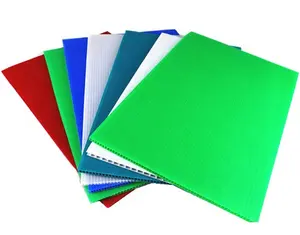

4x8 Coroplast Sheet Wholesale Blank Coroplast Sheet 4x8 Coroplast Polypropylene Sheet Corrugated Plastic Panels Corex Sheet




















PVC wall panels, also known as PVC cladding panels, are wall decoration materials made from polyvinyl chloride (PVC). PVC wall panels are of various types, like PVC bathroom wall panels and PVC shower wall panels. They are suitable for various environments, such as kitchens, commercial spaces, healthcare facilities, educational institutions, public facilities, etc.
PVC wall panels have the following characteristics. Durability: PVC wall panels are made from polyvinyl chloride material, which provides strength and durability, preventing them from cracking or warping easily. Waterproof: PVC wall panels have excellent waterproof properties, effectively protecting the walls from moisture and preventing damage in humid environments. Easy to clean: The smooth surface of PVC wall panels is non-absorbent and easy to clean. Simply wiping with a damp cloth can remove stains and dirt. Wide range of colors: PVC wall panels offer various colors and textures, allowing for customization according to personal preferences and decor styles.
Easy installation: PVC wall panels are typically installed using a tongue-and-groove system, making installation quick and convenient without complex tools. Low maintenance cost: Due to their durability and easy-to-clean nature, PVC wall panels have low maintenance costs, requiring minimal repairs or replacements. Environmental-friendly: PVC wall panels are an environmentally friendly wall decoration material as they are free from harmful substances and can be recycled. Soundproofing and insulation: PVC wall panels provide a certain level of soundproofing and insulation, reducing noise transmission and heat loss.
PVC wall panels can be installed using different methods, depending on the specific product and users' preferences. Here are a few common installation methods. Adhesive installation: The method involves applying a strong adhesive to the back of the PVC wall panels and pressing them firmly onto the prepared wall surface. Make sure to use an adhesive that is suitable for PVC and the specific wall surface. Follow the adhesive manufacturer's instructions for application and drying time. Screw installation: With proper methods, the PVC wall panels are attached to the wall using screws. Pre-drill holes in the panels and wall surface, then insert screws through the panels and into the wall. Ensure that the screws are tight enough to secure the panels but not so tight that they damage the PVC.
Nail installation: Similar to screw installation, the method involves using nails to secure the PVC wall panels to the wall. Pre-drill holes in the panels and wall surface, then insert nails through the panels and into the wall. Use a hammer to gently tap the nails, ensuring they are firmly in place without damaging the PVC. Interlocking installation: Many PVC wall panels have interlocking edges, such as tongue-and-groove or click-lock systems. The PVC panels are designed to fit together seamlessly, creating a tight and secure installation. Slide the panels together, ensuring they are properly aligned and locked into place. Panel adhesive tape: Some PVC wall panels come with adhesive tape on the back. The method involves removing the protective backing from the adhesive tape and pressing the panels firmly onto the prepared wall surface. Ensure that the wall surface is clean and smooth before applying the adhesive tape.